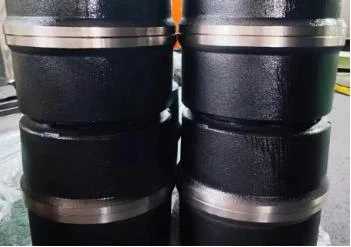თებ . 07, 2025 03:35
სიაში დაბრუნება
drum brake diagram dodge
Drum brakes have long been integral to vehicle braking systems, particularly in older models and certain modern trucks that prioritize durability and cost-effectiveness. Understanding the specifics of a drum brake system, especially in classic vehicles like Dodge, is crucial for enthusiasts, mechanics, and those involved in restoration projects. A comprehensive diagram of a Dodge drum brake system can elucidate the complex interplay of components and ensure efficient maintenance or restoration.
In the realm of Dodge vehicles, especially the iconic models from the mid to late 20th century, drum brakes offer a fascinating glimpse into the era's automotive engineering. Their simplicity and reliability in certain models mean they are still favored for restoration projects. For instance, Dodge enthusiasts often work on models like the Dart, Charger, or older Ram trucks, where drum brakes were standard. Preserving authenticity during restoration requires understanding each component's role and using compatible parts that mirror original specs. Using an accurate drum brake diagram is indispensable. For mechanics and restoration experts, authentic Dodge service manuals or specialized aftermarket diagrams tailored specifically for the model year in question can be invaluable resources. These diagrams provide exploded views of the system, including brake linings, springs, retainers, and self-adjusters, giving enthusiasts and experts alike a clear map to guide their work. There's also an increasing number of digital platforms offering interactive diagrams that give users a 360-degree view of drum brake systems. These tools can help visualize the specific alignment and interaction of components, providing a virtual insight that static diagrams may lack. In conclusion, the drum brake system, particularly within Dodge vehicles, requires a nuanced understanding to maintain or restore effectively. Expertise in the system's functionality, combined with trustworthy resources such as detailed diagrams, can empower both novice and seasoned car enthusiasts to approach these projects with confidence. Whether for a modern-day repair or a nostalgic restoration, the drum brake's legacy as a stalwart in braking technology prevails, serving as a testament to its enduring design and operability.


In the realm of Dodge vehicles, especially the iconic models from the mid to late 20th century, drum brakes offer a fascinating glimpse into the era's automotive engineering. Their simplicity and reliability in certain models mean they are still favored for restoration projects. For instance, Dodge enthusiasts often work on models like the Dart, Charger, or older Ram trucks, where drum brakes were standard. Preserving authenticity during restoration requires understanding each component's role and using compatible parts that mirror original specs. Using an accurate drum brake diagram is indispensable. For mechanics and restoration experts, authentic Dodge service manuals or specialized aftermarket diagrams tailored specifically for the model year in question can be invaluable resources. These diagrams provide exploded views of the system, including brake linings, springs, retainers, and self-adjusters, giving enthusiasts and experts alike a clear map to guide their work. There's also an increasing number of digital platforms offering interactive diagrams that give users a 360-degree view of drum brake systems. These tools can help visualize the specific alignment and interaction of components, providing a virtual insight that static diagrams may lack. In conclusion, the drum brake system, particularly within Dodge vehicles, requires a nuanced understanding to maintain or restore effectively. Expertise in the system's functionality, combined with trustworthy resources such as detailed diagrams, can empower both novice and seasoned car enthusiasts to approach these projects with confidence. Whether for a modern-day repair or a nostalgic restoration, the drum brake's legacy as a stalwart in braking technology prevails, serving as a testament to its enduring design and operability.
წინა:
შემდეგი:
Ახალი ამბები
-
The Power and Reliability of Brake DrumsსიახლეებიAug.27,2025
-
The High-Quality Truck Brake DrumsსიახლეებიAug.27,2025
-
Quality Brake Drums for Reliable PerformanceსიახლეებიAug.27,2025
-
Get the Quality Semi Trailer Brake Drums for Your FleetსიახლეებიAug.27,2025
-
Everything You Need to Know About Brake DrumsსიახლეებიAug.27,2025
-
Enhance Your Vehicle's Performance with Reliable Brake DrumsსიახლეებიAug.27,2025
-
Truck Drum Brake Spring Replacement ProcedureსიახლეებიAug.22,2025


